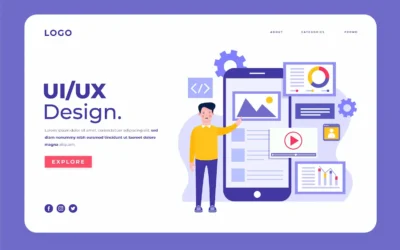Bringing Your Vision to Life
Every great product starts with an idea. Whether it’s an innovative app, a digital tool, or an eCommerce platform, small and medium-sized businesses (SMBs) must navigate a complex process to turn their vision into a viable product. Without a structured approach, businesses risk wasting time and resources on designs that fail to resonate with users.
Product design is not just about aesthetics—it’s about problem-solving, user experience, and business alignment. A well-designed product meets user needs while supporting business objectives, ensuring long-term success. By following a structured design process, SMBs can create products that are not only functional but also scalable and competitive.
Step 1: Defining Your Product Strategy
Before jumping into the design phase, it’s essential to establish a solid product strategy. This strategy should clearly define your product’s purpose, target audience, and business goals.
Understand Your Market and Users
Start by conducting thorough market research. Identify your competitors, analyze their strengths and weaknesses, and determine what gaps your product can fill. Equally important is understanding your potential customers. What are their pain points? How do they currently solve their problems? Use surveys, interviews, and data analysis to gain real insights.
Set Clear Objectives and Success Metrics
Once you understand your market, define what success looks like for your product. Establish key performance indicators (KPIs) such as user engagement, conversion rates, or revenue targets. This will help guide decision-making throughout the design and development process.
A strong product strategy should answer the following questions:
- What problem does the product solve?
- Who are the primary users?
- How does the product fit into the business model?
- What are the must-have features versus nice-to-have additions?
Step 2: Wireframing and Prototyping
With a well-defined strategy in place, the next step is to visualize the product. Wireframing and prototyping help structure the user experience before investing in full development.
Create Wireframes for Structure and Flow
Wireframes are basic, low-fidelity layouts that outline the structure and functionality of your product. They help identify how users will navigate through different sections and ensure that key features are positioned effectively. Wireframing tools like Figma, Sketch, or Adobe XD can make this process more efficient.
Develop Interactive Prototypes
Prototyping takes wireframes a step further by creating interactive models that simulate real user interactions. This allows SMBs to test design concepts and make necessary adjustments early in the process. High-fidelity prototypes help stakeholders visualize the final product and provide valuable user feedback before development begins.
Step 3: User Testing and Feedback Loops
User-centered design is critical to a product’s success. Testing your prototype with real users provides insights into usability, potential friction points, and areas for improvement.
Conduct Usability Testing
Gather a group of target users and observe how they interact with your prototype. Ask them to complete specific tasks while noting any confusion or obstacles they encounter. Tools like UserTesting, Maze, or Hotjar can provide detailed analytics and heatmaps to refine your design.
Iterate Based on Feedback
No product design is perfect from the start. Using the feedback collected from usability tests, make iterative changes to improve user experience. This could involve refining navigation, adjusting button placements, or simplifying workflows.
Step 4: Development and Launch Preparation
Once the design is validated through testing, the development phase begins. For SMBs, efficient collaboration between designers and developers is essential to ensure a smooth transition from design to a working product.
Ensure a Smooth Handoff to Development
A clear and well-documented design system ensures consistency during the development process. Use tools like Zeplin or Figma’s Dev Mode to provide developers with detailed UI specifications, asset files, and interaction guidelines. Regular check-ins between designers and developers can help resolve potential roadblocks early.
Conduct Final Testing and Refinements
Before launching, the product should undergo rigorous quality assurance (QA) testing. This includes:
- Functionality Testing: Ensuring all features work as intended.
- Performance Optimization: Checking load times and responsiveness.
- Accessibility Compliance: Making sure the product meets WCAG guidelines for usability by all users, including those with disabilities.
Step 5: Continuous Improvement Post-Launch
A product launch is not the final step—it’s the beginning of an ongoing refinement process. Monitoring user behavior and feedback helps businesses continuously improve their product to maintain relevance in a competitive market.
Track Key Metrics and User Behavior
Post-launch, use analytics tools like Google Analytics, Mixpanel, or Heap to monitor how users interact with your product. Identify trends in user engagement, conversion rates, and feature usage to determine what works and what needs improvement.
Implement Agile Iterations
The best products evolve based on real-world usage. Adopt an agile mindset by regularly releasing small updates to address user pain points, introduce new features, and optimize performance. This approach keeps the product competitive and aligned with evolving customer expectations.
Final Thoughts: A Roadmap to Product Success
Turning a vision into a fully realized product requires strategic planning, user-focused design, and iterative improvements. By following a structured approach—starting with research, wireframing, prototyping, testing, development, and continuous refinement—SMBs can create products that solve real problems and provide outstanding user experiences.
Investing in effective product design not only enhances usability but also drives customer satisfaction, retention, and long-term business growth. For SMBs looking to make an impact, prioritizing thoughtful, user-centric product design is the key to success.




